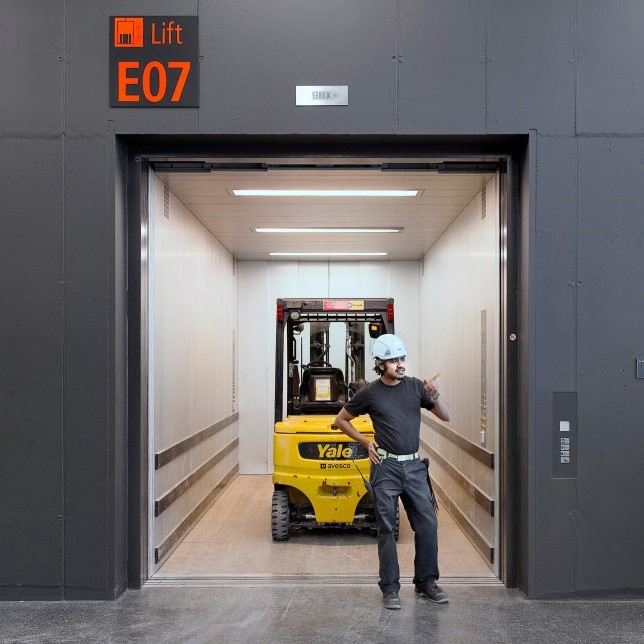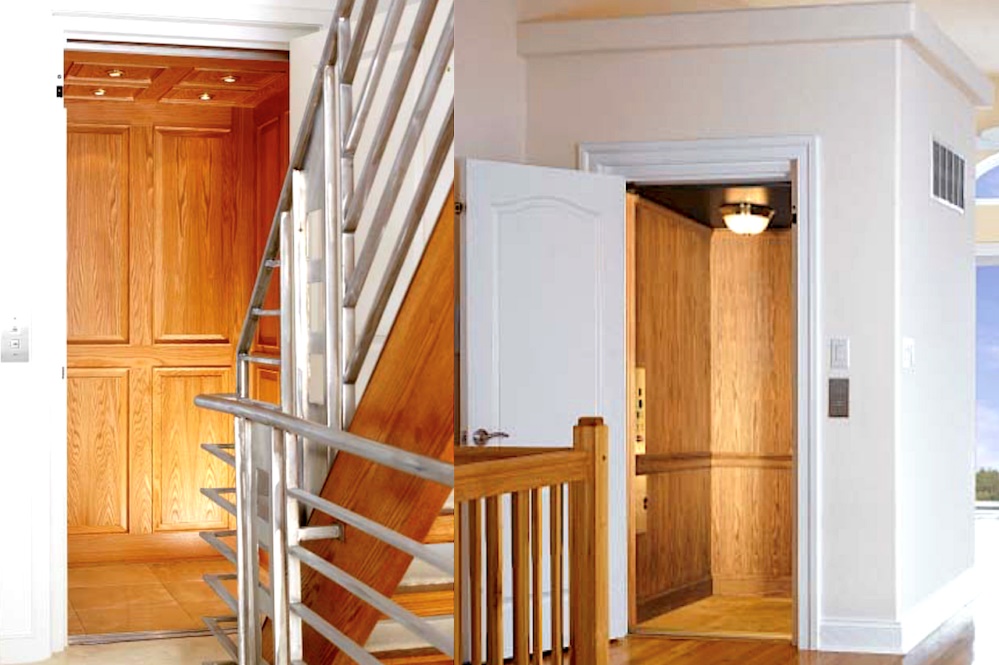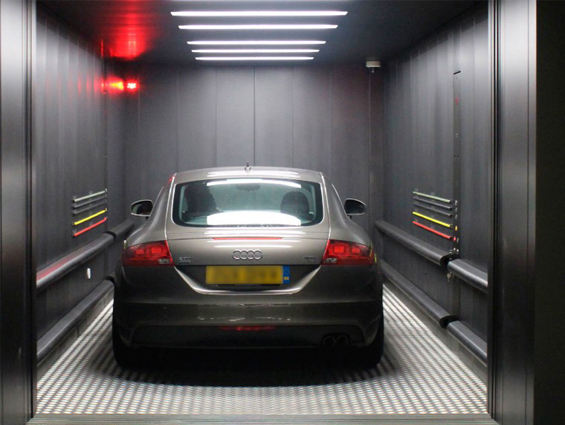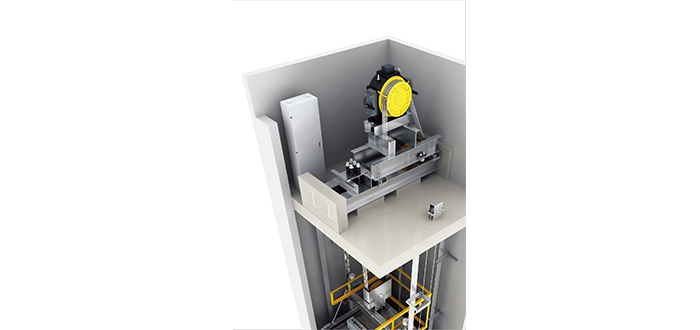When you think about lift dimensions, it is important to know the standard sizes and how they are used. These sizes affect how well the elevator system works. They help it fit both commercial passenger lifts and residential elevators. Picking the right size is key for good use and user accessibility. Plus, it helps the lift match the building design. By looking at the standard dimensions for each type of lift and what shapes their design, you can make a good choice. You will be able to choose an elevator system with the right size for your needs.
Standard lift sizes are set to fit many common needs. These include lifts for people, goods, and homes. The standard dimensions cover things like the lift shaft, size of the cabin, and door width. This helps make sure the lift works well in different places. For example, lifts used in busy areas like public spaces are often bigger. This helps carry more people at the same time.
The dimension of a lift changes with how it will be used and how much space you have. A passenger lift might have a small cabin for five to eight people. Some lifts are much larger; those can fit thirty or more people. For freight elevators, weight capacity is the most important thing because they carry heavy items. So, the size of the shaft and the room inside the cabin matters a lot. Key considerations like standard dimensions, shaft size, cabin size, and door width help when you need to pick the right lift for a home, a tall building, or busy office spaces. Knowing about these standard lift sizes makes choosing much easier. Now, let’s look at different elevator types and what sets their sizes apart.

Elevator dimensions can be very different depending on the type of lift you need and what you use it for. There are passenger elevators, freight elevators, and home lifts, and each one is built for its own job. Passenger elevators are common in commercial buildings. They are made to carry people and focus on giving enough space for that. Freight elevators are built differently. They are strong and can carry heavy items or a lot of materials up and down. Home lifts help make houses easier to get around in, and these focus on being small to fit in smaller spaces. Below, we talk more about each type of lift and what makes them special for their use and accessibility.
Passenger elevators are vital components in modern buildings, facilitating smooth vertical transportation. The standard dimensions of a passenger lift are crucial, ensuring safety and efficiency in user experience. Cabin sizes typically accommodate various loads, with weight capacities ranging from 450 kg to over 1,500 kg, depending on the building's usage—residential complexes, commercial spaces, or public areas.
Passenger elevators are the most widely used type of elevator, commonly installed in both residential and commercial buildings. Their standard dimensions typically range from 3 feet by 4 feet (about 900mm x 1200mm) to 5 feet by 8 feet (about 1500mm x 2400mm), depending on the required capacity. Several factors influence the appropriate elevator size, including building occupancy, expected traffic flow, and accessibility requirements, such as accommodating wheelchairs or stretchers.

Freight elevators are made to handle tough jobs. The most important thing is their load capacity. These lifts are built to move goods, equipment, and other materials. That is why these need to be strong and able to carry a lot of weight. Flexibility is also key for them. Standard dimensions for freight elevators depend on what they are used for. Big lifts can hold from 1500kg to 3000kg. The lift car size is made big enough for large and heavy items. It is important to have the right pit depth and headroom. These make sure the lift works well and stays safe during use.
Freight elevators are specifically engineered to be larger than passenger elevators, as they are intended for transporting heavy goods and bulky items. While exact dimensions can vary, common sizes typically range from 6 feet by 6 feet (about 1800mm x 1800mm) to 8 feet by 8 feet (about 2400mm x 2400mm). These elevators are built with high weight capacities to ensure safe and efficient movement of freight within commercial, industrial, or warehouse buildings.

Residential elevators, or home lifts, make it easy to move between floors and help with accessibility at home. These lifts are small, so they work well in houses and in not-so-big residential complexes.
The standard dimensions for home elevators can be from 1500 mm x 1100 mm down to smaller lifts made for just one person, at about 900 mm x 1040 mm. When making a residential lift, the size needs to be right for the available shaft space. For example, if there are narrow stairs, you may need some customization for the lift car size so that it fits well.
There are also home lifts that let a wheelchair fit inside. These offer better accessibility for people who have mobility needs. Homeowners can choose lift dimensions based on their own usage, giving them a personalized solution for their home. Using the right lift car size will help you feel more comfortable, while also looking good in any living space.

In hospitals, elevators play a crucial role in ensuring smooth and reliable mobility, as they are essential for transporting medical equipment, stretchers, wheelchairs, and critically ill patients who require assistance. To accommodate these needs, hospital elevator dimensions are typically larger than standard passenger elevators, usually ranging from 5 feet by 7 feet (about 1500mm x 2100mm) to 6 feet by 8 feet (about 1800mm x 2400mm). These spacious designs ensure safe, efficient, and accessible transport throughout medical facilities.

Car elevators help move vehicles in commercial buildings, residential complexes, and public spaces. These lifts need to have the right size to safely move cars between different floors. The internal dimensions of the lift shaft should match the size and weight capacity of the car. There are some specific requirements you have to keep in mind, like pit depth, headroom, and door width. These things help people get cars in and out of the elevator easily.
Sometimes, the shaft and the lift need changes, or customization, so they fit local building codes and the property's specific needs. By doing this, you also help give better accessibility and safety for everyone who uses the car elevator.

Choosing the right lift dimensions is not always simple. It often comes down to a few key considerations. The type of building you have is important. Public and commercial places need lifts that hold more people. On the other hand, most homes can use a smaller lift car. How big your shaft is and the shaft size also matter a lot. They decide how big the lift car inside can be.
The number of people who will use the lift and how often it will run are also big factors. This is very important in places with lots of people using the lift at the same time. All these things help make sure each lift is made for its proper use and that it meets rules for safety and being strong enough for the job. Now, let's look at these parts more closely to help you get the right lift dimensions for your building and usage.
The size of the building affects the lift dimensions. In public spaces, like shopping malls and office buildings, you need a larger passenger lift. This is because more people use them every day. In most commercial places, the passenger lift size is made to fit a group of 10-20 people at one time. This way, it can work well and keep people moving.
Residential buildings give more options when it comes to lift dimensions. Most times, people pick smaller passenger lifts that fit well in their homes. Homeowners may also want a lift that is good for certain needs, such as being easy for a wheelchair or for carrying small things. This helps it blend in, so it does not stand out or take up too much space.
The look and shape of the building can also change the type of lift that is used. Now, more buildings have custom lifts in modern styles to match the way the rooms are set up. Picking the right passenger lift size that fits lift dimensions helps everyone use it well. It also makes sure the lift is good for what the building is made for and makes everyday life or work better.

Shaft size is very important because it tells you the inside space you have and if lift installation is possible. When there is not much space, a compact elevator can be made to fit in the vertical shaft. This helps keep the lift working well even in a small area.
The space you have will decide how big the lift car can be, how deep the pit needs to be, and how much headroom you get above the lift. For example, a shaft in residential buildings that is not very wide might only let you put in a small lift, maybe something like 910 mm by 1220 mm. On the other hand, shafts in big places such as shopping malls have space for larger passenger elevators.
Measuring the shaft size in the right way helps make sure the lift car, pit depth, and headroom will be the right fit and meet the building’s needs. A professional can be very helpful to check the available space and help change the lift design for better usage, especially if there are barriers you need to work around in the shaft or in the building.
The expected number of passengers helps decide the chosen dimensions. Buildings like hotels and business centers, where many people use the elevators throughout the day, need bigger lifts to fit more people at once.
For places that have many floors and different types of activity, it is best to use passenger lifts that hold between 10 and 34 people. The doors and lift size have to be wide and big enough so that people can move in and out fast, even when it gets busy.
On the other hand, homes or buildings with only a few people using the elevator can use smaller lifts. By looking at how people move in the building, you can pick chosen dimensions that make the elevator big enough for the work needed, while still being safe and easy to use.
A standard elevator size chart serves as a critical resource for understanding the various dimensions associated with different types of elevators.
Load (kg) | Persons | Cabin Size (mm) | Shaft Size (mm) | Door Width (mm) | Use Case |
|---|---|---|---|---|---|
320 | 4 | 1100 x 1000 | 1600 x 1500 | 700 | Small Residence |
450 | 6 | 1200 x 1000 | 1800 x 1500 | 700 | Low-Rise Buildings |
630 | 8 | 1400 x 1200 | 1900 x 1600 | 800 | Apartments/Offices |
1000 | 13 | 2000 x 1400 | 2500 x 2100 | 900 | Commercial Buildings |
1600 | 21 | 2100 x 1600 | 2800 x 2200 | 1000 | Hospitals/Wheelchair Access |
These averages are based on ISO 4190 and EN 81 guidelines.
Many things decide how big an elevator cabin will be, such as the way people will use it, the building type, and specific requirements the users might have. The standard lift sizes can be different, but they are usually made to fit a certain number of people and also follow all local building codes. Things like door width and headroom inside the cabin are important for comfort and accessibility. There are also options for customization if you have special needs. It's very important that the cabin width and lift sizes match with what people need for mobility, for example if someone uses a wheelchair, so the elevator can be safe and work well for everyone.
Shaft size will change a lot based on the type of lift and what you need it for. In commercial buildings, you usually need a bigger lift shaft. This is so the elevator system can handle more people moving up and down. But in residential complexes, the shaft can be smaller.
Some key considerations to keep in mind are the internal dimensions of the lift shaft, as it must follow safety standards. You also need to look at things like the door width, headroom, and pit depth. These all help the elevator system work well and stay safe. Enough space in the shaft gives better accessibility and mobility. It also helps to meet the specific needs of people using the lift, and makes room for safety features.
Choosing Delfar Elevator means your lift will meet the right safety standards and fit well in your space. Delfar is great at customization. They make designs that match what you need, whether it is for commercial buildings or homes.Over 15 years of global experience
Exports to more than 50 countries
ISO9001 and EN 81 certified production
Customized solutions for standard and non-standard shaft conditions
Complete after-sales support and fast delivery
Whether you need a compact 4-person lift or a large hospital-grade elevator, Delfar provides tailored solutions with quality assurance.
Contact Delfar today to get a quote or personalized consultation: https://www.delfarelevator.com/
Knowing about standard lift sizes and lift dimensions is very important. It helps make sure your elevators fit the specific needs of each building. This is true whether it is a home or a business. The right shaft size is key. It helps you use space well, keeps people safe, and makes using the elevator better. Things like building type, how many people will use it, and the available shaft space matter a lot. They help you pick the best lift sizes for your work. Picking the right lift means you follow rules and make the area work better for everyone. If you want something made just for you, ask for quotes for your commercial elevator now!
Standard dimensions for passenger lifts in commercial buildings can be as small as 1100 mm x 1400 mm. They may be as big as 1500 mm x 2100 mm. Some lifts can hold up to 34 people. The size of the lift car and its weight capacity will change with how much traffic there is in the building.
Yes, with customization, lift sizes can match the needs of any building layout. The lift shaft and available space are key things to look at when choosing the size. Safety needs and the features you want will also matter. This means you get a lift that fits well inside the shaft and works the way you need. Customization helps the lift look good and work right for the space.
Building codes have a big role in setting lift dimensions. They help make sure lifts meet safety standards for the size of the building. When builders follow these rules, the lifts can be used by all people, work the right way, and fit with local laws. This keeps the people inside the lift safe and also protects the building.
Lift doors and entryways need to be safe and easy for everyone to use. The width of the door is important, especially for wheelchair lifts. Bigger door width is often better for lifts in places where the public goes. This helps people move in and out more easily, which is good for both homes and businesses. Having the right width helps with accessibility, so everyone can get where they need to go.